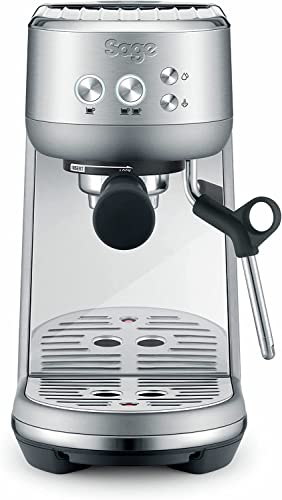How to Use a Coffee and Espresso Maker
A coffee and espresso maker produces shots of pressurized water that are forced through very finely packed espresso beans. The result is a beverage that is very flavorful, with a dense layer of crema over.
Certain machines make use of grounds or pods and allow you to regulate how strong your brew is, while some can also steam milk for cappuccinos and lattes. You can find a stovetop model that works as a Moka.
1. Guide to Buying
The top espresso and coffee maker is more than just an appliance that pours hot water over grounds. It's an item that allows you to make quality drinks in the comfort of your home. There are numerous options in this category and it can be overwhelming. However there are certain aspects to consider when choosing the right machine.

Understanding the various brewing methods is the first step. Some machines use gravity to filter the water through the grounds, while others use the aid of a pump. These differences could affect the final flavor profile and cost.
While the most advanced coffee-and-espresso makers might have digital controls and programmable settings, they're also typically the most expensive. It is important to consider the frequency of use for your espresso maker and coffee maker, and if the extra costs are worth the extra expense.
There are also less-expensive semi-automatic models that provide an intermediate level between manual and automation operation. best home espresso machine require the user some of the work by hand, including grinding and tamping. However, they also permit a more controlled approach to the brewing process and are typically cheaper than fully automatic models.
2. Instructions
It is easy to use an espresso maker and coffee maker. The most important step is selecting the right ingredients and preparing the machine. It is best to use freshly ground coffee beans that were ground using the burr mill specifically designed for espresso. The grinder produces a fine, uniform powder that releases the finest flavor from the bean. You can use a steam wand for capspuccinos or lattes.
It is necessary to turn the espresso machine on and allow it to warm up before you prepare any drinks. It can take a few minutes, depending on the machine's size. It is important to ensure that the machine is heating evenly. This process can be speeded up by pulling a blank that is, to run the machine with no grounds in the portafilter. This will not only heat your cup but also flush out the group head in order to avoid the buildup of a dirty drink.
After your machine has been heated, you can add the ground coffee into the portafilter. The next step is to tamp the grounds to ensure that they are evenly packed. You can purchase an tamper on the internet or at most espresso retailers. Once you're done, you can turn on the espresso machine and place one small cup beneath each spout. To make espresso, simply switch the control panel to the espresso position. This triggers the micro-switches which start the pump and the heating chamber, pushing hot water through the grounds and out of the spouts.
3. Ingredients
A coffee or espresso machine can produce a wide variety of drinks. They are the most versatile brewing tools. This is mainly because they can be used to make espresso and drip-based drinks.
Espresso is a concentrated coffee drink that is produced by forcing hot, high-pressure water through finely roasted beans in a very short amount of time. Espresso is usually more sweet and thicker than regular coffee. It's also a great way to enjoy flavors that are more complex than those found in drip coffee, but it's not for all people.
The best espresso is dark-roasted and coarsely ground to ensure maximum flavor extraction. Vigil suggests that you "bloom your coffee" prior to brewing. This involves pouring hot water over the coffee and letting it sit for 20-30 seconds (releases flavor notes). After adding the remaining hot water, you'll use the machine's pressure to push the water through the coffee grounds.
Certain machines are more efficient than others. This is the reason some coffee and espresso makers have a bad reputation for being difficult to use. With a little practice you can make your own cafe-quality espresso in the blink of an eye.
There are other methods to make almost-espresso without the use of a machine, for example using a siphon (a fancy glass device that uses the vapor pressure to soak the grounds in hot water). This is a laborious and time-consuming process.
4. Preparation
Before using your espresso maker, ensure that your machine is connected and is preheated. You should maintain the same water temperature throughout the brewing process so that you get the most flavor. It's also a good idea to "bloom" or pour a bit of hot water over the grounds of the coffee for 30 seconds. This will let out any carbon dioxide that is in the beans and help the taste of your espresso.
After the brew cycle has finished, remove the portafilter. You can use your espresso maker to prepare traditional single or double shots of espresso, or use steam or a milk wand to create cafe staples such as cappuccinos or lattes. Add sugar to your espresso for the ultimate sweet, decadent drink.
You can also use your espresso maker to make a pot of coffee, but you will need to use a filter since the majority of models don't have the capacity to pour a full pot. The key to good pot coffee is starting with freshly ground, high-quality beans that are ground to a perfect consistency.
You can also try using different kinds of water. Hard water has more insoluble minerals, which can lead to mineral buildup and less flavorful drinks. Soft or filtering water can cut down on this buildup.
